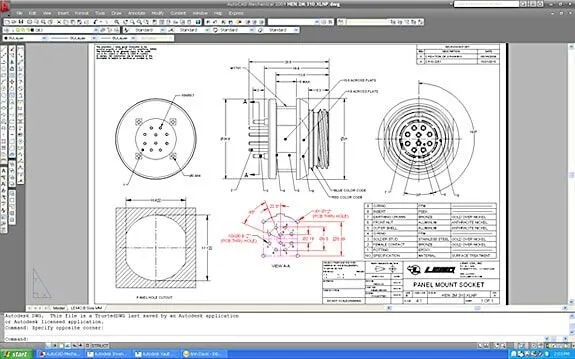Scan and R2V: Getting from Paper to EDM/PDM for Engineering
Scan and R2V: Getting from Paper To EDM/PDM for Engineering
Engineering competition is fierce and survival means adopting the latest technologies. It means delivering the best product or service fast and at a fair price. To maintain a competitive edge, a company must leverage its information assets, which includes a tremendous amount of engineering documents, some in CAD and some in paper format. By some estimates, there may still be as many as eight billion paper engineering documents worldwide.
The need to capture, modify and distribute existing paper designs within today’s 2D and 3D CAD technology continues to be a requirement for success. That’s why we still get calls for a conversion of paper drawings, mylar, bluelines and other media into AutoCAD, Revit, Solidworks, CATIA or some other CAD program.
Most engineering firms realize that regardless of how experienced they may be in operating their CAD software, scanning and converting from paper to CAD requires a different skill set. This is especially true when the original drawing is old, damaged or misshapen. In these cases, both scanning and conversion become a challenge and require expert care to extract accurate data.
The Importance of Integrating Paper Drawings with EDM/PDM and CAD
The #1 reason for converting paper to CAD and integrating with an engineering firm’s EDM/PDM system is labor savings in the revision cycle. This labor savings, of course, translates to cost savings as well.
According to the manufacturers of GTX Software, other benefits include:
- An increase in the value of CAD by eliminating its use for tedious redraw. CAD can now be used for product design and analysis functions
- A common electronic database
- Reduced retrieval and print times for documents with a document management solution
- Improved information flow with workflow and Email tools
- Improved conformance to the ISO 9000 or OSHA regulations by instituting better document control procedures
- Increased value of paper drawings through integration with CAD and EDM/PDM tools
- Fewer lost, damaged and misfiled documents
- Immediate availability of accurate information
- Streamlining of the change process
- Improvement in time to market
- Increased quality
The Need for Accuracy in Conversion
Your EDM/PDM is only as valuable as the information contained in it, and that information needs to be accurate. Unfortunately, when it comes to scanning paper drawings for inclusion in the EDM/PDM, many technicians don’t realize that the original drawing needs to be scanned in a particular way if they plan to convert it to CAD later. Even if they do scan properly, they don’t have the knowledge or experience to properly convert the drawing.
While it’s true that most CAD software programs do offer some R2V conversion capabilities, if you’re not expert in the process, you’ll probably not get the conversion results you hoped for. Even for those who understand the process of R2V, their knowledge is often generalized, and what is missing the ability to determine what will work best for each individual scanned file. Each image is different and it’s very rare that two different images will respond with equal success to the same method of conversion. It takes the experience to know which method or combination of methods will work for each individual raster file.
That’s why we get calls from top-notch engineering firms…we have the knowledge and the experience to know which method — or methods — will work for each individual drawing. Sometimes it’s not just one method; it may be a combination of two or more methods used in one drawing.
Making Your EDM/PDM Work
Ensure the success of enabling your paper drawing archives in your EDM/PDM system. Payback and user acceptance will go faster when you use an expert scanning and R2V conversion service as the first step toward implementation. Whether you choose an incremental approach or a large-scale conversion, contact CAD / CAM Services first for a price quote.
Recent Posts


CAD Outsourcing Doesn’t Have to Be Done In India
CAD Outsourcing Doesn’t Have to Be Done in India Do a Google search for “CAD Outsourcing” and what you’ll find is lots of firms located in India, which is fine if you’re prepared to go off-shore for CAD services. But what if your U.S. based company prefers to stay a...

AutoCAD Fiber Optic Designs & Drawings
Before proceeding forward in explaining the affinity between AutoCAD and Fiber Optic, it would be prudent to rationalize the utility of optical cables. When communicating between systems, either via the internet or via an internal network system, a medium needs to be...

CAD Outsourcing: How to Get the Most Out of Engineering
In today’s competitive market, companies need as much help as possible. If you want to take a larger market share, you can start by outsourcing some of your work. This is a quick way to expand your engineering power without onboarding and training a new staff. This...
